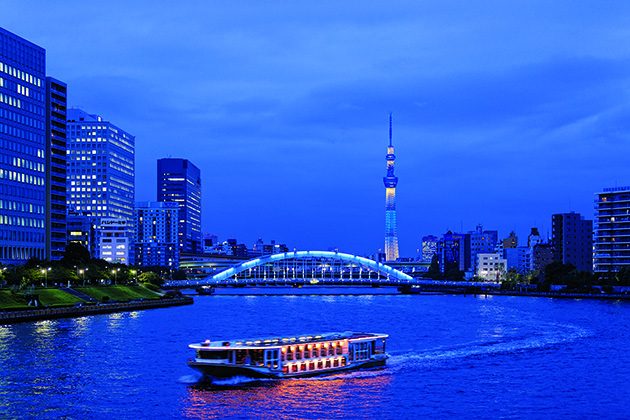A look at what Tokyo and Kamaishi have to offer at Rugby World Cup 2019
Advertising Feature Supported by Tokyo Convention & Visitors Bureau
Sporting passion becomes cultural discovery at Rugby World Cup 2019
Rugby World Cup 2019 is a golden opportunity to make or renew acquaintances with Tokyo and with Japan. Teams from the British Isles will be in action for five pool-phase matches in Tokyo and neighbouring Yokohama. UK and Irish fans prepared to accompany their teams further afield can follow their passion to other venues across the islands of Honshu, Hokkaido, and Kyushu.
Japan offers a beguiling array of charms to transform a sporting excursion into a culturally eye-opening experience. Tokyo accompanies its urban bustle, for example, with a surprising scope of green sanctuaries.

International Stadium Yokohama, a 72,000-seat facility, will host the semi-finals and the final at Rugby World Cup 2019
A convenient stop en route to or from Tokyo Stadium is Inokashira Park, a 38-hectare oasis that includes trails, a large pond, a shrine and even a zoo. Also convenient to Tokyo Stadium is Jindaiji, an atmospheric group of wooden temple buildings in a verdant setting. Jindaiji ranks among the oldest temples in Tokyo.
Visitors interested in the arts of Japan enjoy a luxury of options in Tokyo. Two up-front choices are the Tokyo National Museum, for an overview of Japanese art from prehistory to the 20th century, and the National Museum of Modern Art, for a survey of more recent work by Japanese artists. A newer museum that is engagingly approachable in scale but richly rewarding in content is the Sumida Hokusai Museum. It features a permanent collection of ukiyo-e woodblock prints by Katsushika Hokusai and special exhibitions of complementary works by other artists.
For more information, please visit www.sportsjourney.jp
Deserving of special note at Rugby World Cup 2019 are the two matches in the northern-Honshu city of Kamaishi. Neither match will feature a team from the British Isles, but the venue and its historic and scenic setting warrant a visit on their own merits.

The seductive cuisine of Iwate Prefecture (shown) and other parts of northern Japan give full play to the bounty of local fields and waters
Kamaishi, the birthplace of modern steel-making in Japan, suffered from consolidation in that industry and then from the tsunami that followed the Great East Japan Earthquake in 2011. It has erected Kamaishi Recovery Memorial Stadium as a symbol of its resurgence. Prudent design supplements permanent seating for 6,000 with temporary seating to increase the capacity for Rugby World Cup 2019 to 16,000.

The passion for rugby that permeates Kamaishi springs forth in the displays at the city’s Rugby Café

Abukuma Cave, in Fukushima Prefecture, is among the scenic reasons to head north to take in a match at Kamaishi Recovery Memorial Stadium
A little planning will invest a rugby excursion to Kamaishi with scenic and cultural stops along the way. Adventurers of all ages will enjoy, for example, a stroll through Abukuma Cave. That cavern stretches at least 3.1 kilometres through limestone beneath the Fukushima Prefecture city of Tamura, and about 600 metres is open to the public. Meanwhile, shopping and dining complexes that feature local products and cuisine provide a useful overview of regional culture.
The time is now to start planning your Rugby World Cup 2019 itinerary. Make the most of this once-in-a-lifetime opportunity to translate your rugby passion into cultural discovery. See you in Japan!





